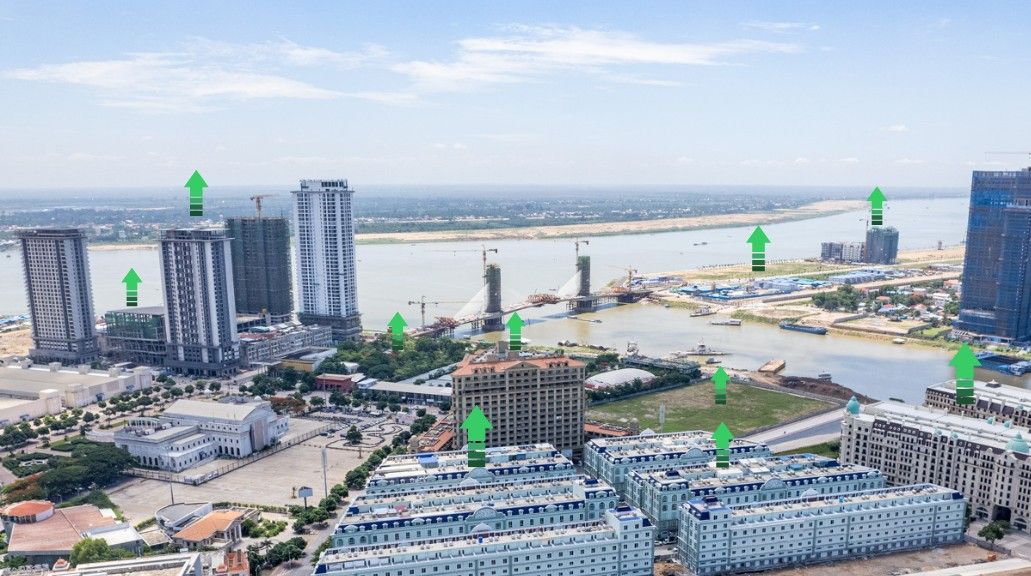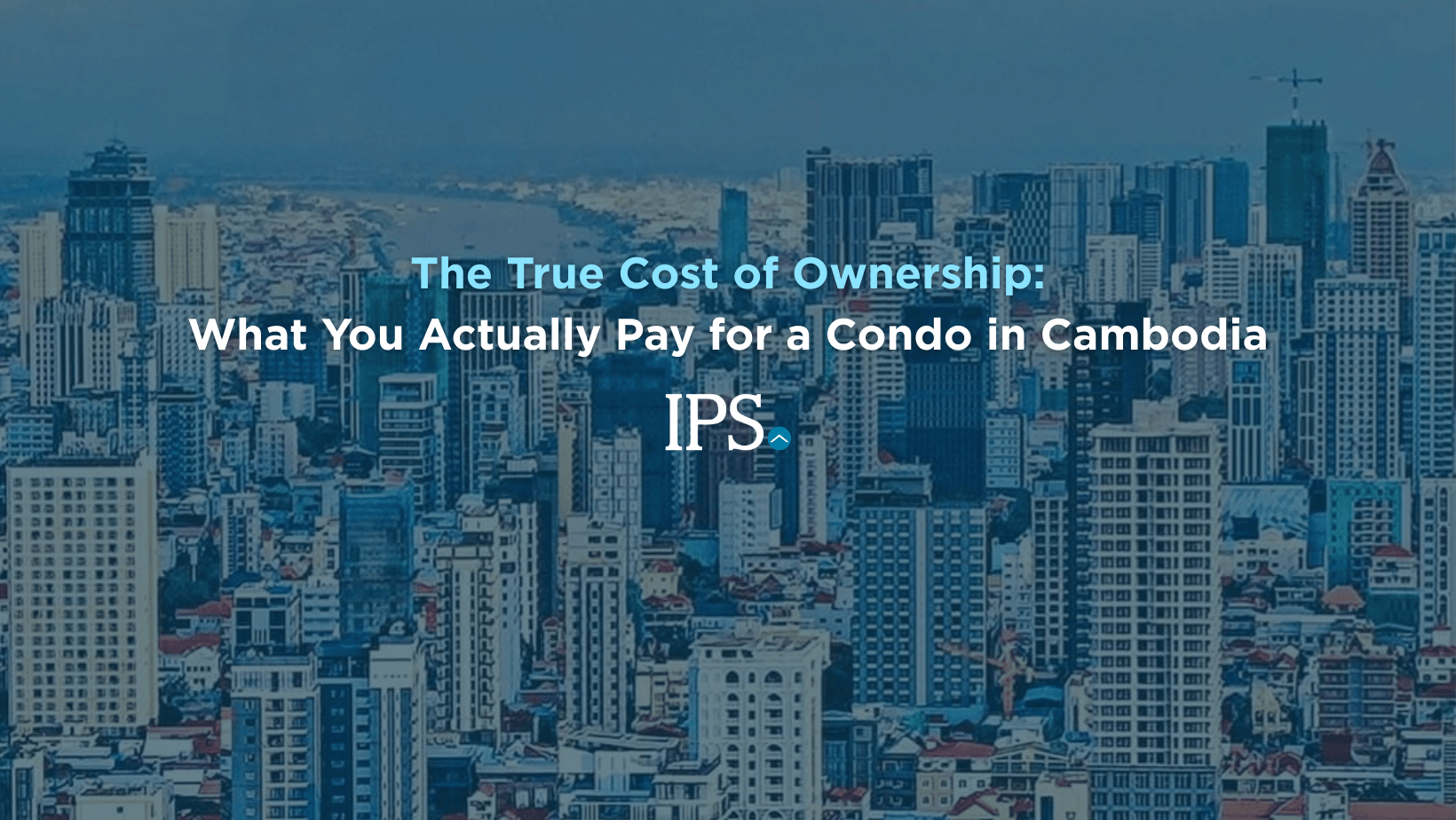The Role of Transportation Infrastructure in Cambodia’s Property Values
The demand for residential, commercial, and industrial properties has surged, leading to the development of various infrastructure projects across Cambodia . As a result, understanding the factors that influence property values has become increasingly important for investors, developers, and policymakers.
Among these factors, transportation infrastructure stands out as a key driver of property value appreciation in the Cambodian real estate market. As the country continues to modernize and attract foreign investment, improvements in roads, railways, airports, and ports are essential for facilitating trade, tourism, and overall connectivity.
Well-developed transportation networks not only boost the economy but also improve the quality of life for Cambodian citizens by providing better access to essential services and opportunities.
Transportation Infrastructure In Cambodia
Cambodia’s government has outlined several infrastructure development plans aimed at enhancing the country’s transportation networks. These plans include road, railway, airport, and port projects that will improve domestic and regional connectivity, promote economic growth, and attract foreign investment .
Types Of Transportation Infrastructure
- Roads and highways
Roads and highways form the backbone of Cambodia’s transportation system, connecting cities, towns, and rural areas. The country has been investing in the expansion and improvement of its road network to enhance connectivity and support economic growth.
- Railways
Railways in Cambodia have experienced a revival in recent years, with upgrades to existing lines and plans for new connections. These developments aim to improve domestic transportation and establish regional links, supporting trade and economic integration.
- Airports
Air transportation plays a significant role in connecting Cambodia to the global economy. The country’s new airports, namely Techo Takhmao International Airport and Siem Reap Angkor International Airport , are expected to bring substantial growth in passenger traffic and accommodate future demand.
- Ports and waterways
Cambodia’s ports and waterways are essential for facilitating trade and transportation. The country is investing in the development of its ports, such as Kep Fresh Seaport and Sihanoukville Autonomous Port , to improve maritime connectivity and support economic growth.
Funding for Cambodia’s transportation infrastructure projects comes from various sources, including the government, international organizations, and foreign investors. Multilateral development banks, such as the Asian Development Bank and the World Bank, provide financial support for infrastructure projects, while foreign investments from countries like China, Japan, and South Korea contribute to the development of Cambodia’s transportation networks.
Impact Of Transportation Infrastructure On Property Values

In this section, we will delve into the multifaceted ways in which transportation infrastructure shapes property values, encompassing aspects such as connectivity and accessibility, economic growth and development, urbanization and land use changes, and evolving property market trends and investment opportunities.
Connectivity And Accessibility
Improved transportation infrastructure enhances connectivity and accessibility, making it easier for people to travel and access essential services. As a result, properties located near well-developed transportation networks often command higher values due to the convenience and ease of access they offer residents and businesses.
Economic Growth And Development
Transportation infrastructure plays a central role in driving economic growth and development. Better connectivity fosters trade, attracts investment, and generates employment opportunities. Consequently, areas with robust transportation networks tend to experience higher property values as demand for industrial, commercial, and residential properties increases.
Urbanization And Land Use Changes
As Cambodia continues to urbanize, transportation infrastructure projects can lead to land use changes, transforming previously rural or underdeveloped areas into urban centers. These transformations often result in increased property values as demand for housing, commercial spaces, and other amenities grows in newly developed areas.
Property Market Trends And Investment Opportunities
The development of transportation infrastructure can create new investment opportunities in the property market. As infrastructure projects progress, investors and developers may seek to capitalize on the anticipated growth in property values by acquiring land and properties in strategic locations.
Consequently, transportation infrastructure projects can shape property market trends and influence investment decisions.
Case Studies
Phnom Penh
A. Infrastructure projects and their effects on property values
In Phnom Penh, numerous infrastructure projects have positively influenced property values. For instance, the construction of the 2,215-meter Chroy Changvar Bridge has improved connectivity between the city center and suburban areas, resulting in an increase in land prices in the Chroy Changvar district. Additionally, the expansion of Monivong Boulevard has led to another rise in property values along the thoroughfare.
B. Future prospects for the capital’s real estate market
Phnom Penh’s real estate market is poised for a bright future, with ongoing infrastructure projects such as the Phnom Penh-Siem Reap expressway and Phnom Penh-Bavet expressway set to further improve the city’s connectivity and accessibility. These advancements are anticipated to sustain demand for properties, leading to potential growth in property values throughout the capital.
Siem Reap
A. Tourism and transportation infrastructure
Siem Reap, a renowned tourist destination in Cambodia, has reaped the rewards of advancements in transportation infrastructure. Improved connectivity through road networks, airport expansions, and public transportation has made the city more accessible to tourists, bolstering the local economy. This progress has positively promote growth in property values, particularly in areas with high tourist traffic.
B. Property market trends and potential
Siem Reap’s property market exhibits growth potential, driven by the city’s flourishing tourism industry and ongoing infrastructure developments . As transportation networks continue to improve, demand for residential, commercial, and hospitality properties is likely to increase, offering potential investment opportunities and contributing to a positive trend in property values.
Challenges And Opportunities
Balancing Infrastructure Development And Environmental Concerns
One of the primary challenges in Cambodia’s real estate and infrastructure sectors is striking a balance between development and environmental preservation. Rapid urbanization and construction projects can lead to environmental degradation, the loss of green spaces , and increased pollution.
Addressing these concerns requires careful planning and the implementation of eco-friendly practices, such as green building standards and sustainable urban design. This approach presents an opportunity for developers to create environmentally conscious projects that cater to the growing demand for sustainable living.
Ensuring Equitable Distribution Of Benefits
Another challenge is ensuring that the benefits of infrastructure development and property market growth are equitably distributed among the population. In some cases, rapid urbanization can lead to rising property prices, displacing low-income residents, and exacerbating social inequalities.
To address this issue, policymakers and developers must work together to create affordable housing solutions and implement policies that promote inclusive growth. This approach can help ensure that all segments of society benefit from the country’s development.
Encouraging Sustainable And Responsible Property Development
Lastly, promoting sustainable and responsible property development is essential for the long-term success of Cambodia’s real estate market . This involves encouraging developers to adopt environmentally friendly practices, such as using energy-efficient materials and incorporating green spaces into their projects.
Additionally, responsible development includes ensuring that projects align with local regulations and community needs. By fostering a culture of sustainability and responsibility, Cambodia can create a thriving property market that benefits both the environment and its people.
Conclusion
In conclusion, transportation infrastructure plays a key role in shaping Cambodia’s real estate market and overall economic development.
Improved connectivity through roads, bridges, and public transportation systems not only enhances the appeal of residential and commercial properties but also boosts the local economy by attracting tourists and investors.
As Cambodia continues to invest in infrastructure projects, it is essential to address challenges such as environmental preservation, equitable distribution of benefits, and sustainable property development. In doing so, the country can foster a robust and inclusive real estate market that benefits its people and supports long-term growth.
Have you seen developments around your property? It may be the perfect time to re-evaluate your property’s value. Work with our professional valuers to know the growth of your property value!
Related Articles
The True Cost of Ownership: What You Actually Pay for a Condo in Cambodia
So, you’ve been looking at the Cambodian skyline, maybe browsing through the latest high-rise developments in Phnom Penh or the boutique luxury builds in Siem Reap. You’ve seen the prices
Time Square 9 Gatsby Residence | Official BKK1 Launch & Pre-Booking
Explore BKK1 from every angle and see why The Gatsby Residence – Time Square 9 is the most anticipated address in Phnom Penh…
Time Square 5 is Now Complete, Pushing the Time Square Series into Its Next Chapter
The Momentum Continues: What’s Next in the Series With five completed projects and all 350 units in TS 5 officially sold out, the series is now pushing forward with four major developments across the capital and the coast. Time Square 6 (TS 302): Located on Street 302 in BKK1. It is a 48-storey tower that […]


